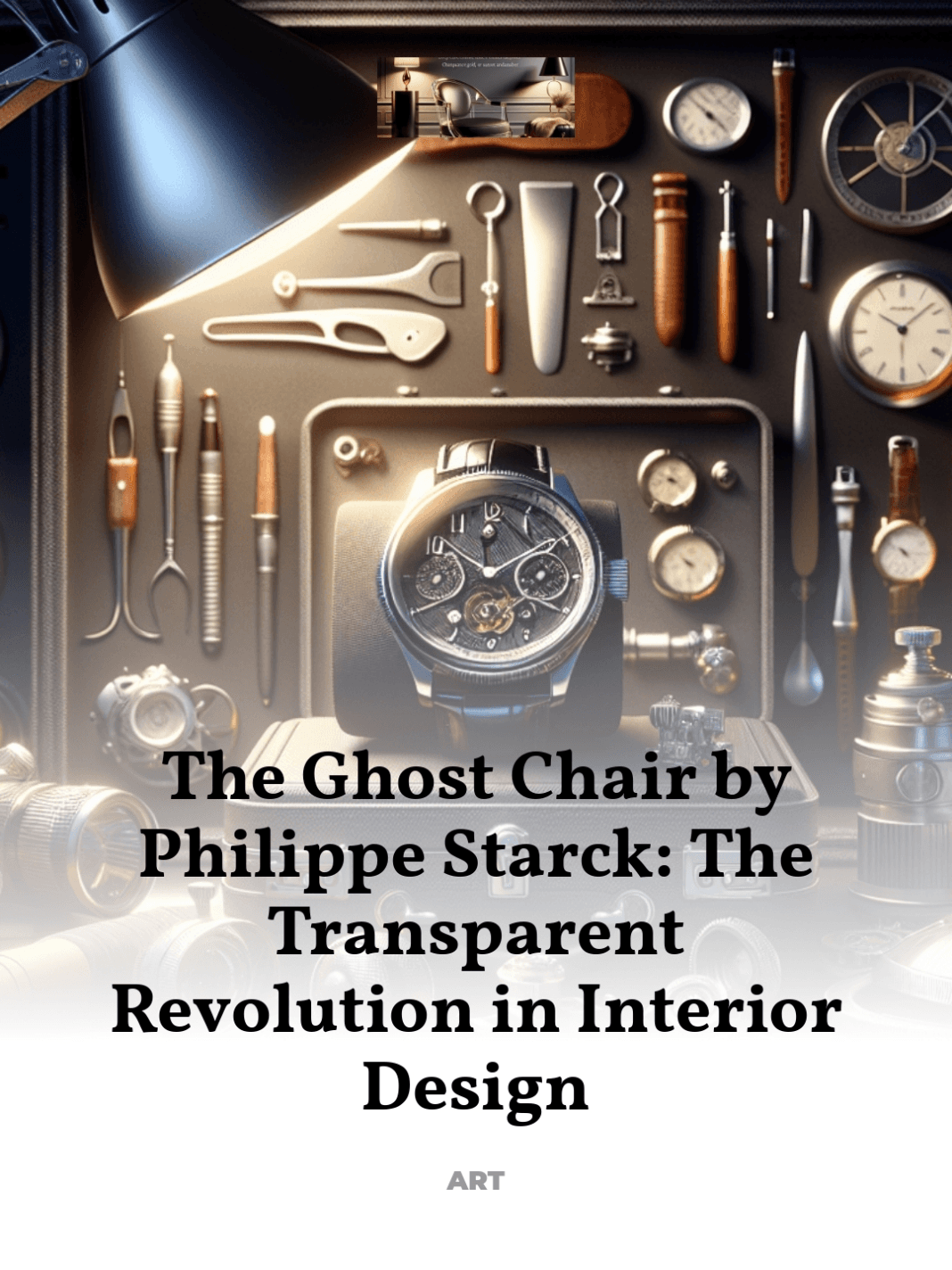– How this acrylic chair challenged traditional luxury furniture.
The Ghost Chair, a masterpiece of Philippe Starck, stands as a testament to innovation in the realm of luxury furniture. This acrylic marvel redefined the aesthetics of space and luxury, merging modern materials with classical design.
- The Genesis of the Ghost Chair
- Design and Materials: A Transparent Appeal
- Impact on Interior Design
- Cultural Significance and Reception
- Legacy and Continued Relevance
The Genesis of the Ghost Chair
Philippe Starck, a name synonymous with revolutionary design, unveiled the Ghost Chair in 2002. Crafted for the Italian design company Kartell, this chair was not merely a piece of furniture but a statement. Starck, known for his ability to push the boundaries of design, utilized polycarbonate, a material chosen for its robustness and clarity, to reimagine the classic Louis XVI armchair.
The choice of material was pivotal. Polycarbonate allowed for the creation of a single mold chair—a seamless design that boasted durability and lightness, challenging traditional luxury furniture which often relied on heavy, opulent materials like wood and metal. The Ghost Chair’s transparent appearance gives it a nearly ethereal presence, allowing it to blend with any decor, yet its form ensures it remains a focal point of discussion.
Design and Materials: A Transparent Appeal
The design of the Ghost Chair is a blend of baroque style and modern technology. Its classic lines and medallion back echo the opulence of the 18th century, yet its clear, colorless form speaks to minimalist modern aesthetics. This juxtaposition makes the Ghost Chair a versatile piece that can stand out or blend in, depending on its setting.
- Material Innovation: The use of polycarbonate was a game-changer in furniture manufacturing. It is resistant to impact, heat, and scratches, which makes the Ghost Chair durable and suitable for both indoor and outdoor use.
- Manufacturing Process: The chair is produced through a process called injection molding, where liquid polycarbonate is injected into a mold in the shape of the chair. This technique allows for mass production without compromising on quality.
The material not only defines the aesthetic and functional quality of the chair but also highlights Starck’s commitment to sustainability. Polycarbonate is recyclable, aligning with contemporary concerns about environmental sustainability in design practices.
Impact on Interior Design
The introduction of the Ghost Chair marked a pivotal moment in interior design. Its transparent nature allows it to exist in spaces without overwhelming them, a quality that has made it particularly popular in smaller urban homes where space is at a premium. Designers have leveraged its versatility in various environments, from minimalist modern apartments to opulent classical homes, showcasing its adaptability to multiple styles.
Moreover, the Ghost Chair has encouraged designers to experiment with transparent furniture, leading to a broader trend that includes tables, desks, and other furnishings made from similar materials. This trend speaks to a larger movement in interior design towards space, light, and form, where the intrinsic properties of furniture are used to affect the perception and feel of space.
Cultural Significance and Reception
Upon its release, the Ghost Chair was met with both acclaim and skepticism. Purists argued that it might lack the warmth and substance typically associated with luxury furniture. However, its popularity grew as it began to appear in design magazines, trendy restaurants, and celebrity homes. The chair has been featured in countless photo shoots, movies, and design exhibitions, cementing its status as an icon of modern design.
The Ghost Chair also reflects a cultural shift towards transparency in design—literal and metaphorical. It represents an era where simplicity and clarity are valued over opulence and complexity, a shift that is mirrored in other areas of design and culture.
Legacy and Continued Relevance
Two decades after its introduction, the Ghost Chair remains a sought-after piece for collectors and designers alike. Its enduring appeal can be attributed to its revolutionary design and the way it continues to inspire new generations of furniture designers.
Starck’s creation is more than just a chair; it is a piece of cultural history, a blend of art and functionality that challenges the conventions of furniture design. As we move forward, the principles it represents—innovation, transparency, and sustainability—continue to influence the luxury furniture market.
For further exploration of Philippe Starck’s work and impact on design, visit authoritative sources such as the Museum of Modern Art’s design collection.



